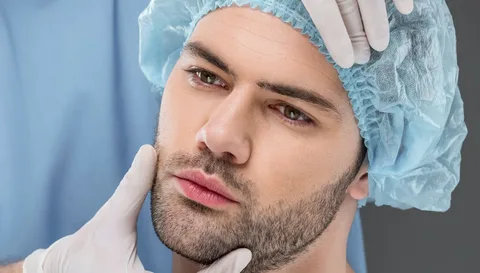Things You Should Understand Before Having a Facial Hair Transplant.

To many men, facial hair means a lot. A full healthy-growing facial hair makes a man feel more masculine and confident about himself. That is why many men are now opting for facial hair transplant surgery. This is because not all men can grow facial hair naturally. Various factors can influence a man’s ability to naturally grow a beard or facial hair. These factors are genetics, hereditary facial hair loss, and physical trauma to the beard area. If you are influenced by any of these factors that make it hard for you to grow facial hair naturally.
Facial hair transplant surgery is one of them. Other facial hair restoration treatments include medications, beard micropigmentation, and PRP for hair loss therapy. Out of all these facial hair restoration procedures, facial hair transplant surgery offers the most reliable option. Some of the benefits of having a facial hair transplant surgery are permanence and that it’s only done once. Before you decide to go through with facial hair transplant surgery, it is important to consult your doctor first. Your doctor will help you to understand the cause of facial hair loss. Understanding the root cause of your facial hair loss will allow the doctor to devise an effective treatment plan.
Seeking facial hair restoration services from Beverly Hills Hair Restoration clinic allows you to get the best solutions to hair loss. Dr. John Kahen, the senior hair restoration surgeon at BHHR, has over 15 years of hair restoration experience. You can count on him to supply you with the best custom facial hair transplant procedure that meets your hair restoration needs. To help you gain a better understanding of what facial hair transplant surgery is all about, keep on reading this post.
What Is A Facial Hair Transplant Surgery?
A facial hair transplant is a hair restoration procedure that allows men who cannot naturally grow their facial beards to have thick full beards through hair transplant surgeries. Facial hair transplant involves removing or harvesting graft hairs from any body area and transferring them to the facial area facing thinning hair. They may be beards, sideburns, or mustaches.
A facial hair transplant may sound simple, but it is not. Only a hair restoration surgeon can pull this procedure off successfully. There are two techniques that the surgeon may use to perform a facial hair transplant procedure. These approaches include the FUE hair transplant technique and the FUT hair transplant procedure. Let’s break down these two facial hair transplant techniques to help you understand them better.
1. FUT Facial Hair Transplant
Dr. John Kahen from Beverly Hills Hair Restoration clinic is fluent in these hair transplant procedures. FUT – follicular unit transplantation is a commonly used facial hair transplant procedure. While performing this facial hair restoration technique, the surgeon will use a topical numbing agent to ensure that the patient feels no pain.
He will then use a scalpel to incise a strip of skin containing graft hairs from the donor area. There are various areas that can be used to donate facial hairs. They include the sides of the head, the back of the head, the pubic areas, and the chest. These are viable donor areas as long as they grow healthy hair. The most common donor area is the back of the scalp because it is resistant to hair loss and contains thick full hair.
The skin strip containing graft hairs is dissected to produce follicular units. A single follicular unit contains 1 to 4 hair strands. These follicular units are then transferred to the facial hair region to be transplanted as beards, sideburns, or mustaches. The FUT facial hair transplant is preferable because it takes a shorter time to perform than the FUE facial hair transplant, where graft hair is harvested individually.
2. FUE Facial Hair Transplant
Follicular unit extraction is another facial hair transplant procedure used to restore facial hair. Compared to FUT, which involves cutting out a strip of skin, FUE is used to harvest individual graft hairs. What makes it easier to harvest individual hair graft hairs is a punch-like device. The donor areas are still the same, including the back of the scalp, the sides of the head, the chest area, and the pubic area. The surgeon will decide which area he will use as the donor area. The area has to have thick, complete, and healthy hair that is hair loss resistant. Tiny holes are then made in the recipient area, which is already under local anesthesia.
The numbing agent reduces pain while the process continues. The amount of time it will take to perform a facial hair transplant depends on the number of graft hairs necessary to make the facial hair transplant successful. The FUE facial hair transplant is preferable because it does not leave any linear scar and does not have an extended downtime and recovery period. Since graft hairs are extracted individually, the surgeon can manipulate the outcome to produce a more customized result.
Conclusion
Facial hair transplant allows you to naturally grow a beard of facial hair by transferring hair follicles from the donor area to the facial hair region. The facial hair transplant is sometimes combined with PRP for hair loss to speed up healing, promote hair growth, and make the procedure more effective. Beverly Hills Hair Restoration clinic is the home of facial hair and other hair restoration procedures. If you need to grow hair in your facial region or the scalp, Dr. John Kahen provides suitable hair restoration treatments based on the root cause of the hair loss.



